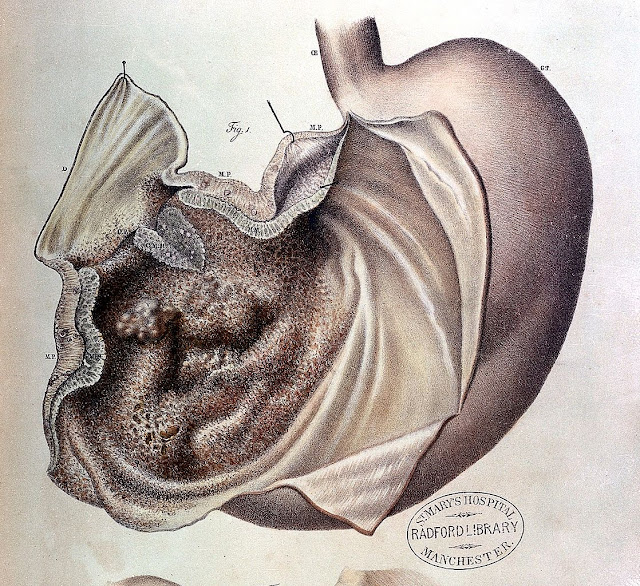Stomach Cancer Stages And Symptoms
Stomach cancer symptoms, stage, and prognosis. There are several types of gastric tumors. The so-called adenocarcinoma - which occurs in the stomach mucosa - occurs most often. The term stomach cancer is often referred to as this type of cancer. It is more common in men than in women. Most patients are over sixty years old.
Often malignant processes occur in the stomach without a clear cause, but sometimes it is a complication of a stomach ulcer. Stomach cancer is relatively common in people with stomach ulcers due to inflammation, which is caused by the bacterium Heliobacter Pylori. Most species occur in the gastric mucosa of the stomach. This is called an adenocarcinoma . Adenoma carcinoma of the stomach takes second place after cancer of lung cancer. This form of cancer is responsible for almost 10% of all new cancer deaths.
Stomach cancer symptoms
In many cases, the diagnosis of stomach cancer is only set at a rather late stage, as the tumor has been sitting for a long time without notice. In the early stages of the disease, you often have almost no or non-specific complaints, so you do not quickly seek medical attention. Symptoms and complaints that may arise are:
Similar complaints often resemble complaints that occur through other, benign stomach disorders such as stomach ulcer. In the early days of the disease, the complaints are relatively vague: an inflated feeling in the stomach, feeling of saturation and loss of appetite. There may be clogging or bleeding. In severe cases, even a breakthrough of the stomach wall can occur.
Stages of stomach cancer
The stages of the disease:
The prognosis of stomach cancer is strongly determined by the stage at diagnosis, localization, and final treatment. The five-year survival is as follows:
Often malignant processes occur in the stomach without a clear cause, but sometimes it is a complication of a stomach ulcer. Stomach cancer is relatively common in people with stomach ulcers due to inflammation, which is caused by the bacterium Heliobacter Pylori. Most species occur in the gastric mucosa of the stomach. This is called an adenocarcinoma . Adenoma carcinoma of the stomach takes second place after cancer of lung cancer. This form of cancer is responsible for almost 10% of all new cancer deaths.
Stomach cancer symptoms
In many cases, the diagnosis of stomach cancer is only set at a rather late stage, as the tumor has been sitting for a long time without notice. In the early stages of the disease, you often have almost no or non-specific complaints, so you do not quickly seek medical attention. Symptoms and complaints that may arise are:
- Weight loss
- Pain upper abdomen
- Full feeling after meal (full of upper abdomen)
- Seated feeling in the abdominal region
- Nausea
- Vomiting (vomit is coffee-colored)
- Reducing appetite
- Suffering complaints
- Blood loss (through blood loss from the stomach) with fatigue and dizziness
- Food disorder complaints (the feeling that the food stays stuck)
- Anemia
Similar complaints often resemble complaints that occur through other, benign stomach disorders such as stomach ulcer. In the early days of the disease, the complaints are relatively vague: an inflated feeling in the stomach, feeling of saturation and loss of appetite. There may be clogging or bleeding. In severe cases, even a breakthrough of the stomach wall can occur.
Stages of stomach cancer
The stages of the disease:
- Stage I stomach cancer: Tumor is limited to the superficial layers of the stomach wall and possible single lymph nodes.
- Stage II stomach cancer: Tumor infiltrates deeper into the stomach wall and/or has glandular lesions.
- Stage III stomach cancer: Tumor grows through the gastric wall in surrounding organs and/or has glandular sores.
- Stage IV stomach cancer: Remote disturbances (elsewhere in the body), local expansion of tumor and glandular surges.
The prognosis of stomach cancer is strongly determined by the stage at diagnosis, localization, and final treatment. The five-year survival is as follows:
- of patients with stage I is still around 76% after 5 years;
- of patients with stage II approximately 36%;
- of patients with stage III approximately 13%; and
- of patients with stage IV approximately 1%.
*Image source : Wikimedia Commons
References :

Post a Comment for "Stomach Cancer Stages And Symptoms"